
ExoMars: Schiaparelli Analysis to Continue
Posted by Ruth McAvinia
2016/10/20 17:05 UTC
Topics: mission status, ExoMars TGO
The fate of the ExoMars lander, Schiaparelli, remains uncertain. European Space Agency mission controllers had been optimistic on Wednesday night that a definitive answer would be known by Thursday morning’s news briefing (watch it here). However, although some more details have been made public about the lander’s descent, it is not yet clear whether it hit the martian surface at a speed it could not survive.
The entry, descent, and landing sequence was fully automated and should have consisted of clear phases. As it reached the atmosphere of Mars, the lander would slow down with atmospheric drag and heat up through friction, before opening a parachute, later jettisoning its heat shield, jettisoning the back half of the protective aeroshell along with the parachute, and firing thrusters shortly in advance of touchdown. The parachute and aeroshell should have been released at 1.2 kilometers from the surface, followed one second later by the activation of the thrusters bringing the lander down to around two meters before a final drop to the surface. The data suggest that the heatshield performed well. The parachute phase happened, and the thrusters fired at least briefly, but possibly not at the intended time or altitude.
Investigations are continuing into exactly what happened and at what stage of the flight. ESA has emphasized the experimental nature of the lander, and the benefits of the data already collected. The detailed monitoring of the descent was a lesson learned from the loss of the UK’s Beagle 2 lander in 2003, whose fate was unknown until 2015. All of the data transmitted by Schiaparelli, also known as the entry, descent and landing demonstrator module (EDM), during descent has been recovered, and the Mars Reconnaissance Orbiter may add some more information about its fate, although MRO has not been in contact with the lander.
Andrea Accomazzo, ESA’s head of solar and planetary missions said: “The EDM entered the atmosphere of Mars and most important of all we have collected all the engineering information from this phase. This we have successfully done with the Trace Gas Orbiter.
“We have data from all the hardware of the EDM. This is fundamental for a test. We can also see the hardware has provided meaningful data. Now we need to analyse why, when we put together this data in the martian environment, the spacecraft did not behave exactly as we expected. It will take more time to have a global picture of the descent.”
Don McCoy, ExoMars project manager, said that the AMELIA (Atmospheric Mars Entry and Landing Investigation and Analysis) instrument team believed most of their data were collected. AMELIA co-principal investigator Stephen Lewis tweeted that 600MB of Schiaparelli data had been received and that 99% of the test was complete.
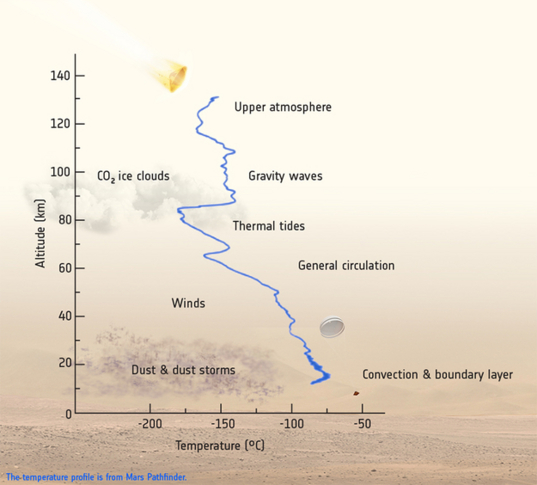
ESA / NASA
Science with AMELIA
The Schiaparelli Entry, descent and landing Demonstrator Module (EDM) carried a number of sensors to measure characteristics of the atmosphere during atmospheric entry and descent. The AMELIA (Atmospheric Mars Entry and Landing Investigation and Analysis) programme, to be carried out by the Schiaparelli science team, will use the engineering data from these sensors to reconstruct the module's trajectory and determine atmospheric conditions, such as density and wind, from a high altitude to the surface. These measurements are key to improving models of the Martian atmosphere. In this illustration, a temperature profile of the Martian atmosphere obtained by the NASA Mars Pathfinder probe is shown.
ESA Director General Jan Wörner again emphasized the value of the information gained by the lander, and the success of the Trace Gas Orbiter (TGO).
TGO continues to perform well following its orbit insertion manoeuvre on Wednesday. It will have a challenging aerobraking phase next year to change its orbit. In addition to conducting science around Mars, TGO will serve as a relay station for ExoMars 2020.
Other related posts:
Or read more blog entries about: mission status, ExoMars TGO
Blog Search
Essential Advocacy
Our Advocacy Program provides each Society member a voice in the process.
Funding is critical. The more we have, the more effective we can be, translating into more missions, more science, and more exploration.
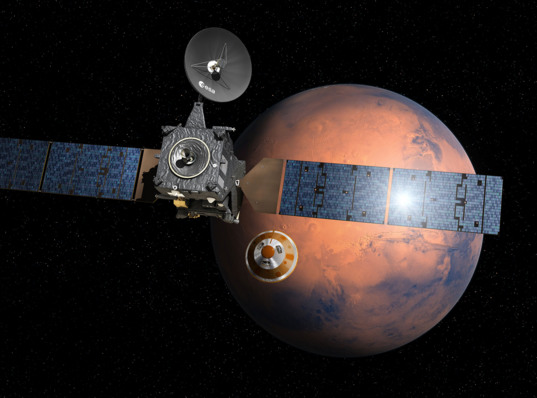

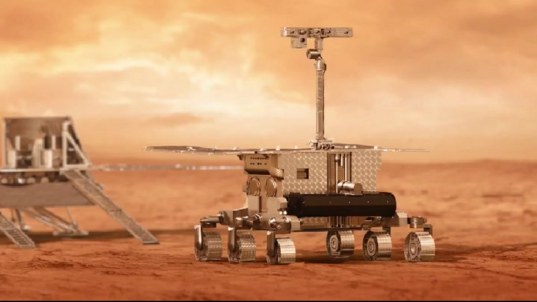
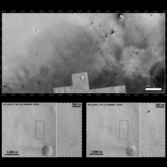
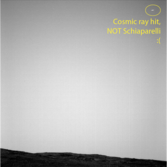
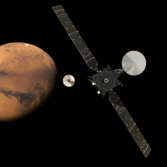






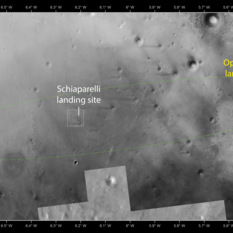




The MRO made a pass and there's literally a black smear on Mars now, so sadly it appears the Beagle 2 landed intact but unable to communicate whereas Schiaparelli communicated until impact.